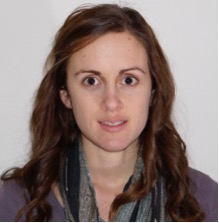Prof. Julia Mundy, Harvard University
2019 Materials Research Prize for Young Investigators

Prof. Mundy made seminal contributions to the design and synthesis of a long-sought material with coexisting magnetic and electric order at room temperature. To create this "multiferroic" material, she stacked chemically distinct layers atop one another with atomic control.
Biography
Prof. Mundy acquired a Ph.D. in Applied Physics at Cornell University in 2014. She was appointed AAAS Fellow at the US Department of Education where she stayed from 2014 to 2015. From 2015 to 2017 she worked as Postdoctoral Fellow at the University of California at Berkeley and as Affiliated Researcher at the Lawrence Berkeley National Laboratory. In 2018, she was appointed as Research Associate in Physics at Harvard University where she is now working as Assistant Professor of Physics. She received various distinctions, including the George E. Valley, Jr. Prize of the American Physical Society (2018), an appointment as Moore Fellow in Materials Synthesis of the Gordon and Betty Moore Foundation (2018) and the Oxide Electronics Prize for Excellency in Research (2017).
Research Summary
Prof. Mundy's research is focused on designing new quantum materials at the atomic-scale with a particular view on emergent phenomena in oxide thin films. Materials systems with many strongly interacting degrees of freedom can host some of the most exotic physical states known, ranging from superconductivity to topological phases. One of the hallmarks of these quantum materials is the ability for a small perturbation to dramatically change the ground state. In thin films, the interface between two distinct materials forms a playground to engineer such emergent states. Specifically -- and in contrast to bulk crystals -- such an abrupt heterointerface can utilize the broken symmetry/reduced dimensionality inherent to the interface as well as induce chemical potential offsets, epitaxial strain and provide proximity to functional phases. Prof. Mundy designs, synthesizes and probes such emergent phenomena in complex oxide thin films. Thin-film epitaxy is used to construct metastable materials, with an emphasis on materials with strong spin frustration/exotic magnetic properties and novel superconductors.